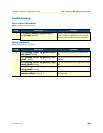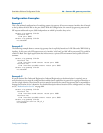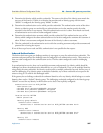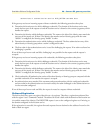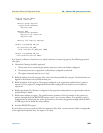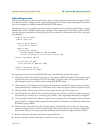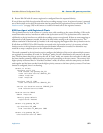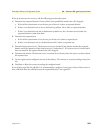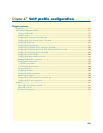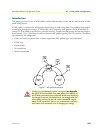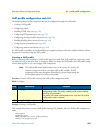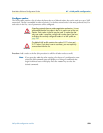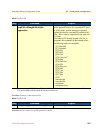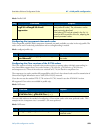
Applications 572
SmartWare Software Configuration Guide 46 • Context SIP gateway overview
If the sip-location-service receives a call, the following procedure takes place:
1. Determine the requested domain. If none of these three possibilities matches the call is dropped.
a. If the call has a destination-uri set the host part of that uri is taken as requested domain.
b. If there is no destination-uri set, but a destination-ip-address, this is taken as requested domain.
c. If there is no destination-uri and no destination-ip-address set, but a location-service bound, the
requested domain is taken from there.
2. Determine the requested user.
a. If the call has a destination-uri set the user part of that uri is taken as requested user.
b. If there is no destination-uri set, the destination-e164 is taken as requested user.
3. Determine the location-service. The location-services are checked if one domain matches the requested
domain and if the imperative of the location-service is “authoritative”. If a location-service is bound and it
does not match for the requested domain the call is dropped.
4. Determine the identity. The location-service is searched for an identity where the name or an alias matches
the requested user.
5. Get the registered and configured contacts of that identity. The contacts are sorted according to the priori-
ties.
6. Distribute or Hunt the contacts according the configured mode.
If one of these steps fails, the call fails. It is recommended to configure a hunt-group in front of that service to
have a fall-back when the call fails because the requested identity is not registered.



